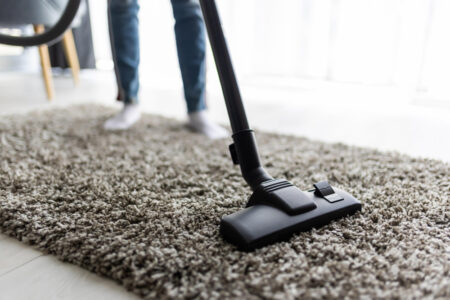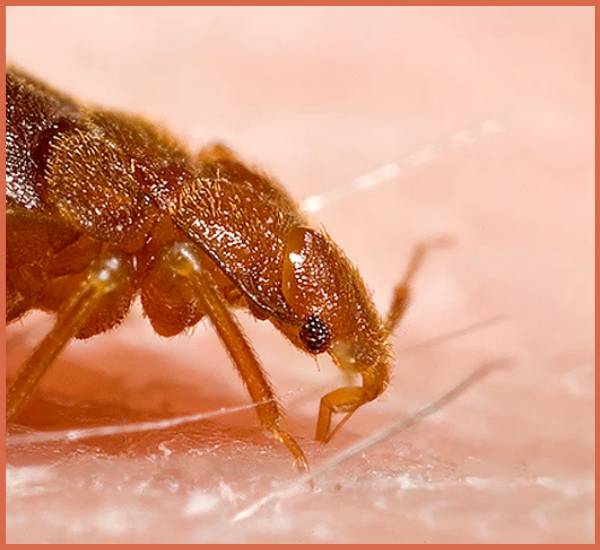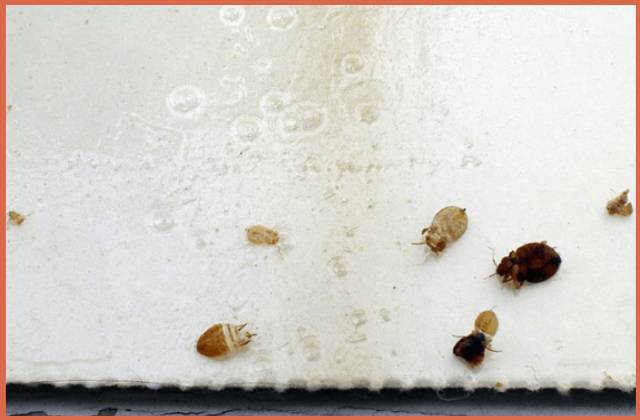Bed bugs are notorious for their ability to infest homes and cause significant distress with their bites and presence. Many people wonder if these resilient pests can live outside and, if so, what conditions they thrive in. Understanding whether bed bugs can survive outdoors is essential for implementing effective prevention and control measures.
Outdoor Survival of Bed Bugs
Do Bed Bugs Live Outside?
Bed bugs are primarily indoor pests that thrive in environments where they have easy access to human hosts for blood meals. Their survival outdoors is significantly limited due to several factors:
Temperature Sensitivity:
Bed bugs are highly sensitive to temperature extremes. They thrive in temperatures between 70°F to 80°F (21°C to 27°C). Outside these temperatures, their survival rates decrease dramatically. Cold temperatures can be fatal, and extreme heat can also be detrimental to their survival.

Lack of Food Sources:
Unlike indoors, where bed bugs have easy access to sleeping humans, the availability of blood meals outdoors is inconsistent. Bed bugs need regular blood feedings to survive, and without a reliable source, their lifespan is considerably shortened.
Environmental Hazards:
Outdoor environments present numerous hazards that bed bugs do not typically encounter indoors. Predators, exposure to elements such as rain and wind, and the lack of sheltered hiding spots make outdoor survival challenging for bed bugs.
Transition Between Indoor and Outdoor Environments
Transportation via Personal Items:
Bed bugs are adept hitchhikers and can be transported from indoors to outdoors via luggage, clothing, and other personal items. This transition often happens when people travel, move, or dispose of infested belongings.
Short-term Survival Outdoors:
While bed bugs can survive temporarily outdoors when transported on personal items, they typically do not thrive. Their outdoor survival is short-lived unless they quickly find a new indoor habitat with a food source.
Impact of Seasonal Changes:
Seasonal changes significantly affect bed bugs’ ability to survive outdoors. During warmer months, they might survive slightly longer, but winter temperatures usually eliminate them. Bed bugs are most comfortable and likely to thrive in controlled indoor environments.
Instances of Outdoor Infestations

While bed bugs are not commonly found living outdoors, there are certain situations where they might be present outside:
Discarded Furniture:
Bed bugs can be found in discarded furniture left outdoors. Items such as mattresses, sofas, and upholstered chairs can harbor bed bugs if they were previously infested and placed outside. This is a temporary situation as bed bugs cannot thrive long-term in such conditions.
Transient Locations:
Areas with high human traffic, such as campsites, park benches, and outdoor seating areas, can occasionally harbor bed bugs. These pests may be transported to these locations via luggage, clothing, or other personal items. However, without a consistent food source and suitable habitat, they do not establish long-term populations in these environments.
Prevention and Control Measures
Understanding that bed bugs are unlikely to establish populations outdoors can help in focusing preventive measures indoors:
Proper Disposal of Infested Items:
Proper disposal of infested items is crucial in preventing the spread of bed bugs. Here are three key points to consider:
Sealing and Labeling:
When disposing of bed bug-infested items, it’s essential to seal them properly to prevent bed bugs from escaping. Use heavy-duty plastic bags or wrapping materials to enclose the items securely. Once sealed, label the bags or items clearly a infested with bed bugs. This step ensures that anyone handling the trash is aware of the infestation and can take appropriate precautions.
Avoid Curbside Dumping:
Leaving infested items curbside without proper containment can lead to the spread of these insects to neighboring areas. It’s important to arrange for the items to be picked up by a professional disposal service that is equipped to handle infested materials. Some municipalities have specific protocols for disposing of bed bug-infested items, so check with local authorities or waste management services for guidance. Proper disposal prevents bed bugs from finding new hosts or hiding spots, thereby containing the infestation.
Heat Treatment Before Disposal:
If possible, treat infested items with heat before disposal. Bed bugs and their eggs are sensitive to high temperatures, and exposing infested items to heat can kill them. Items can be placed in a hot dryer for at least 30 minutes or treated with professional heat equipment. Once treated, the risk of spreading bed bugs through discarded items is significantly reduced.
Proper disposal of infested items is a critical component of effective bed bug management. By sealing and labeling items, avoiding curbside dumping, and utilizing heat treatment, you can help prevent the spread of bed bugs.
Regular Inspection and Cleaning:

Regular inspection and cleaning are vital practices for preventing and managing bed bug infestations. Here are three key points to consider:
Scheduled Inspections:
Implement a regular schedule for inspecting areas prone to bed bug infestations, such as bedrooms, living rooms, and places where people sleep or rest frequently. Inspections should include examining mattress seams, box springs, bed frames, and upholstered furniture for signs of bed bugs, such as live insects, shed skins, and dark fecal spots. Use a flashlight and a magnifying glass to enhance visibility during these inspections.
Thorough Cleaning:
Routine cleaning plays a significant role in controlling bed bugs. Vacuuming carpets, rugs, baseboards, and furniture helps remove bed bugs and their eggs. Dispose of the vacuum bag or contents in a sealed plastic bag immediately after vacuuming to prevent re-infestation. Wash bed linens, curtains, and clothing in hot water and dry them on the highest heat setting.
Decluttering:
Reducing clutter in your home makes it easier to spot and eliminate bed bugs. Clutter provides numerous hiding places for bed bugs, making inspections and cleaning more challenging. Organize and minimize the number of items stored under beds, in closets, and around sleeping areas. Store infrequently used items in sealed plastic containers to prevent bed bugs from accessing them. De-cluttering not only helps in early detection and easier management of bed bugs but also improves overall hygiene and reduces stress associated with maintaining a clutter-free environment.
Preventive Measures When Traveling:
When traveling, taking preventive measures can significantly reduce the risk of bringing bed bugs back home. Here are two key points to consider:
Inspect Hotel Rooms:
Before unpacking, thoroughly inspect your hotel room for signs of bed bugs. Focus on the mattress seams, headboards, bed frames, and upholstered furniture. Look for live bed bugs, dark spots (fecal matter), or shed skins. Use a flashlight to examine dark corners and crevices. Additionally, check luggage stands and avoid placing your suitcase on the bed or floor. Instead, use the luggage rack and keep your suitcase closed when not in use. By identifying and avoiding infested areas, you can prevent bed bugs from hitching a ride back with you.
Use Protective Measures:
Implement protective measures such as using bed bug-proof luggage liners and encasements for your mattress and pillows. These products create barriers that bed bugs cannot easily penetrate. After returning home, immediately wash all clothing in hot water and dry on high heat. Vacuum your suitcase and inspect it thoroughly before storing it.
By conducting thorough inspections and using protective measures, you can enjoy a bed bug-free travel experience and maintain peace of mind.
Conclusion
In conclusion, while the question “do bed bugs live outside?” may arise, the reality is that these pests are not well-suited to outdoor environments. Their survival outdoors is limited due to temperature sensitivity, lack of food sources, and environmental hazards. However, they can be temporarily present in discarded furniture or transient locations. Effective bed bug prevention and control should focus on maintaining a clean indoor environment, proper disposal of infested items, and preventive measures during travel.



